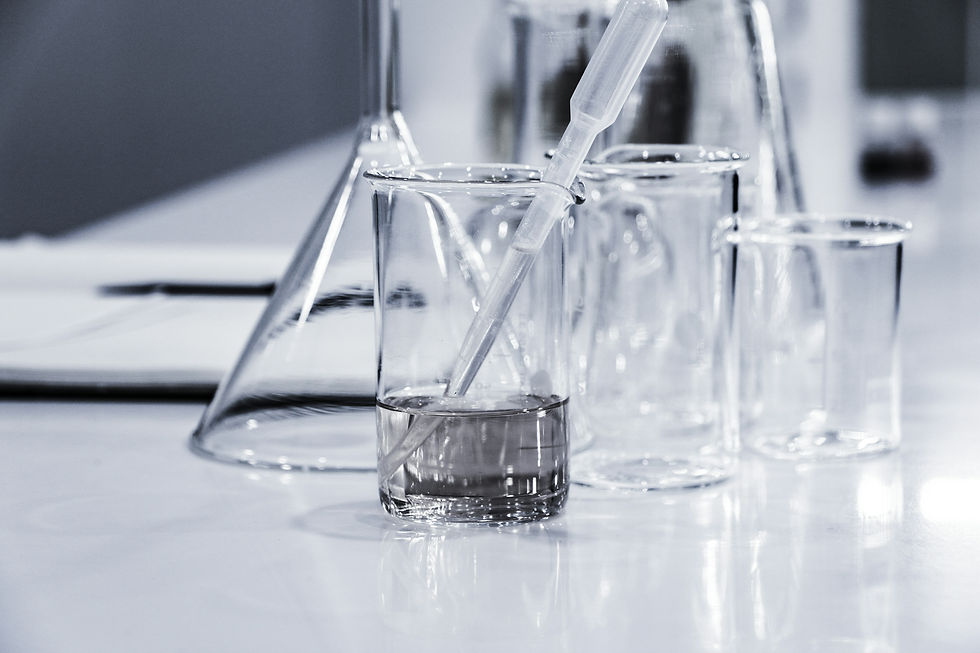Understanding pH and Acid Reflux: Why Balance Matters
- volcanowishes
- Apr 11
- 3 min read

When managing acid reflux or GERD (gastroesophageal reflux disease), it’s easy to focus on trigger foods, medications, or meal timing—but there’s another piece of the puzzle that often gets overlooked: pH balance.
Let’s break it down.
What Is pH, anyway?
The pH scale measures how acidic or alkaline something is. It ranges from 0 to 14:
0–6.9 = acidic
7 = neutral
7.1–14 = alkaline (or basic)
Your stomach naturally contains hydrochloric acid, which has a very low pH (around 1.5 to 3.5). This strong acid helps digest food and kill harmful bacteria. But when stomach acid moves up into the esophagus—where the lining is much more sensitive—it causes the burning sensation known as heartburn.
pH and the Reflux Connection
Your esophagus doesn’t like acid, and it certainly wasn’t designed to handle stomach acid. That’s where pH comes in.
When you eat or drink things that are too acidic, you’re adding more acid into a system that may already be struggling. This can lead to more frequent or severe episodes of reflux.
Conversely, eating more alkaline foods—which have a higher pH—may help neutralize excess stomach acid and provide some relief.
Acidic vs. Alkaline Foods
Acidic (Lower pH) | Alkaline (Higher pH) |
Coffee | Leafy greens (spinach, kale) |
Citrus fruits (oranges) | Melons (especially cantaloupe) |
Soda | Bananas |
Tomatoes | Oatmeal |
Vinegar | Almonds |
Not everyone reacts the same way, but many people with reflux find it helpful to focus on calming, alkaline choices and avoid high-acid foods that can irritate the esophagus.
Sample pH-Friendly Meals
It can be tough to figure out what to eat when managing acid reflux. Here are some simple meals built around alkaline or reflux-friendly ingredients:
Breakfast: Oatmeal made with almond milk, topped with banana slices
Lunch: Grilled zucchini and hummus wrap with a side of leafy greens
Dinner: Baked sweet potato, steamed kale, and quinoa
Snack: Melon slices or a handful of almonds
Can You “Alkalize” Your Diet?
You might’ve heard of alkaline diets or drinking alkaline water. While the science is mixed on whether this changes your overall body pH, some foods do have a neutralizing effect in the digestive system—and that’s what really matters for reflux.
A few simple ways to support better pH balance:
Eat more vegetables and non-citrus fruits
Drink plenty of water (room temperature is best)
Avoid soda, alcohol, and excess caffeine
Eat smaller meals more frequently
Stay upright for 2–3 hours after eating
Myths About pH and Reflux
Let’s clear up a few common misunderstandings:
Myth: “Acid reflux means I have too much acid.”Truth: Sometimes reflux is caused by too little stomach acid or a weakened lower esophageal sphincter.
Myth: “Lemon water is always bad for acid reflux.”Truth: For some people, lemon triggers symptoms. But for others, diluted lemon water can stimulate digestion. It depends on your personal tolerance.
What About Alkaline Water?
Some people with reflux swear by alkaline water (pH 8.8+). Small studies suggest that it may help deactivate pepsin, an enzyme that contributes to esophageal damage during reflux.
It’s not a magic fix, but it might offer mild relief—especially when used alongside other lifestyle changes.
How Doctors Use pH Monitoring
In cases of severe or chronic GERD, doctors may recommend esophageal pH monitoring. This test measures how often and how long acid enters the esophagus over a 24-hour period.
This can help determine:
If reflux is occurring
How serious it is
Whether medications are working
Home pH strips (like saliva or urine tests) are less reliable for diagnosing reflux but can give you insight into general dietary trends.
Lifestyle Tips That Support Digestive Balance
Beyond food and drink, here are a few lifestyle habits that promote healthy digestion and help manage pH levels:
Manage stress, which can alter stomach acid production
Walk after meals to aid digestion
Practice mindful eating: chew slowly, eat without distraction
Elevate the head of your bed to reduce nighttime reflux
Avoid tight clothing around your abdomen
Quick pH Cheat Sheet
Most Alkaline (Soothing):
Melons
Bananas
Oatmeal
Almonds
Leafy greens
Cucumbers
Neutral or Mildly Acidic (Usually Safe):
Brown rice
Carrots
Broccoli
Herbal teas
Highly Acidic (Often Triggering):
Coffee
Orange juice
Tomatoes
Soda
Vinegar
Final Thoughts
Understanding pH is one more tool in your reflux management toolbox. By leaning into more alkaline foods, avoiding excess acidity, and supporting your digestive system through simple habits, you can reduce irritation, promote healing, and feel better day by day.






Comments